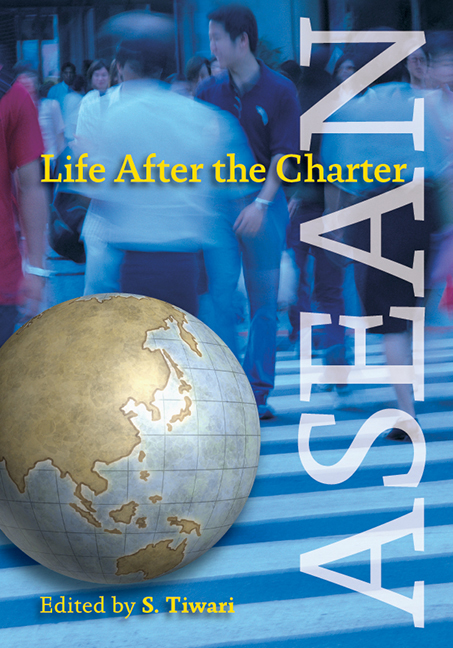Book contents
- Frontmatter
- Contents
- Foreword
- Preface
- List of Contributors
- Introduction
- 1 ASEAN Legal Personality under Its New Charter – Its Nature, Meaning and Implications: Status of the Work and Issues Involved
- 2 Does ASEAN Exist? The Association of Southeast Asian Nations as an International Legal Person
- 3 Life in ASEAN After the Entry into Force of the ASEAN Charter: Implications and Follow-ups
- 4 Translating the Design into a Bloc: The Domestic Implementation of the ASEAN Charter
- 5 ASEAN Trade in Goods Agreement (ATIGA)
- 6 The ASEAN Comprehensive Investment Agreement 2009: Its Objectives, Plans and Progress
- PRIVATE SECTOR PERSPECTIVES
- Index
6 - The ASEAN Comprehensive Investment Agreement 2009: Its Objectives, Plans and Progress
Published online by Cambridge University Press: 21 October 2015
- Frontmatter
- Contents
- Foreword
- Preface
- List of Contributors
- Introduction
- 1 ASEAN Legal Personality under Its New Charter – Its Nature, Meaning and Implications: Status of the Work and Issues Involved
- 2 Does ASEAN Exist? The Association of Southeast Asian Nations as an International Legal Person
- 3 Life in ASEAN After the Entry into Force of the ASEAN Charter: Implications and Follow-ups
- 4 Translating the Design into a Bloc: The Domestic Implementation of the ASEAN Charter
- 5 ASEAN Trade in Goods Agreement (ATIGA)
- 6 The ASEAN Comprehensive Investment Agreement 2009: Its Objectives, Plans and Progress
- PRIVATE SECTOR PERSPECTIVES
- Index
Summary
BACKGROUND
Since the Asian financial crisis in 1997/98, ASEAN has been working towards building up its economic resilience to external shocks by reinforcing macroeconomic fundamentals at the national levels and seeking to strengthen global and regional integration. ASEAN's intention is to transform itself into a regional powerhouse that would be a driver of both regional and global expansion through regional integration. The 1997 ASEAN Leaders’ Declaration agreed on the transformation of ASEAN into a stable, prosperous and highly competitive region (ASEAN Vision 2020). At its 2003 meeting in Bali, ASEAN Leaders declared that the ASEAN Economic Community (AEC) shall be the goal of regional economic integration by 2020 (Bali Concord II) and this goal was accelerated to 2015 at the Cebu Summit in 2007.
In making the AEC a reality, ASEAN intensified internal integration measures towards the process of evolving into an economic area that would take advantage of the strong economic potential of a combined market of close to 600 million people. The ASEAN Economic Community Blueprint (AEC Blueprint) was developed as a single and coherent roadmap for advancing the AEC by identifying the characteristics and elements of the AEC, with clear targets and timelines.
Under the Blueprint, legal instruments of regional integration were reviewed to make them relevant to the present competitive global economic environment. These measures included the review of the various goods agreements and protocols and their integration into a single comprehensive agreement known as the ASEAN Trade in Goods Agreement (ATIGA). In addition, the ASEAN Investment Area (AIA) Council of Ministers agreed to step up regional efforts in attracting FDI. In 2007, the AIA Council agreed to revise the 1987 Agreement for the Promotion and Protection of Investments (known as the Investment Guarantee Agreement or “ASEAN IGA”), and the 1998 Framework Agreement on the ASEAN Investment Area (AIA) or the “AIA Agreement”, as well as its two related protocols, into a single agreement to be known as the ASEAN Comprehensive Investment Agreement (ACIA). The ACIA was concluded in 2008 and signed in 2009.
- Type
- Chapter
- Information
- ASEANLife after the Charter, pp. 100 - 110Publisher: ISEAS–Yusof Ishak InstitutePrint publication year: 2010



